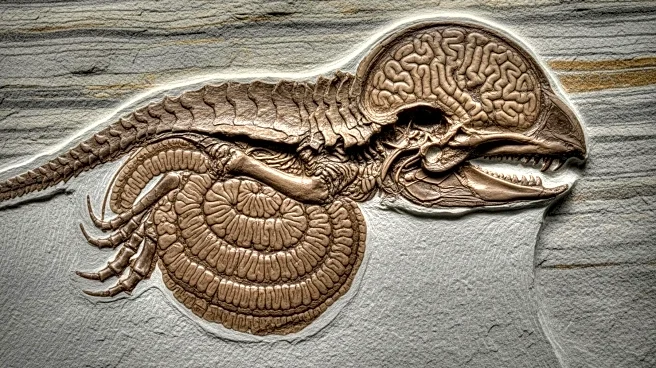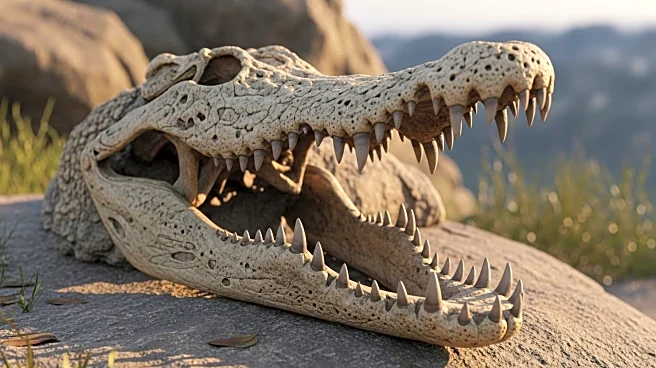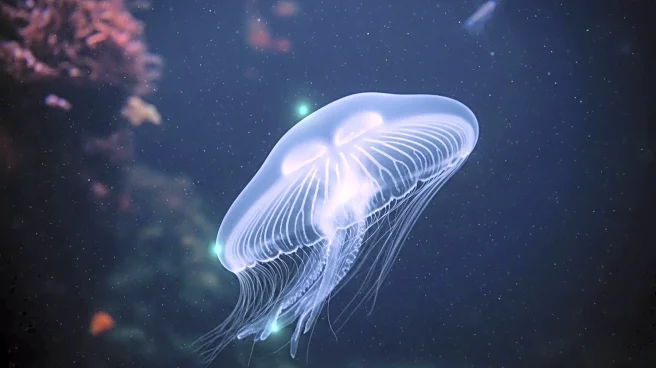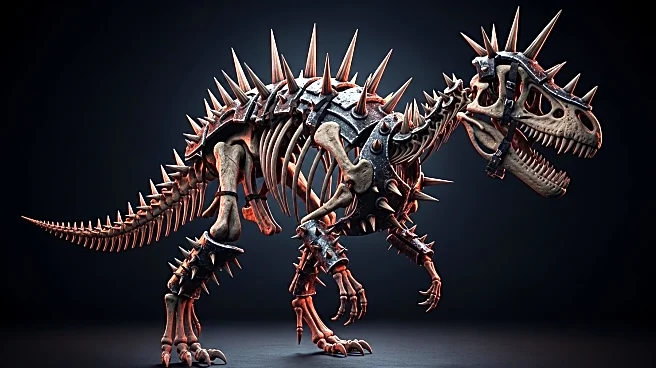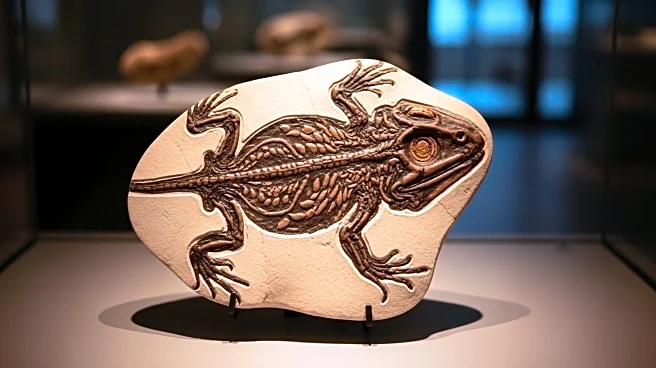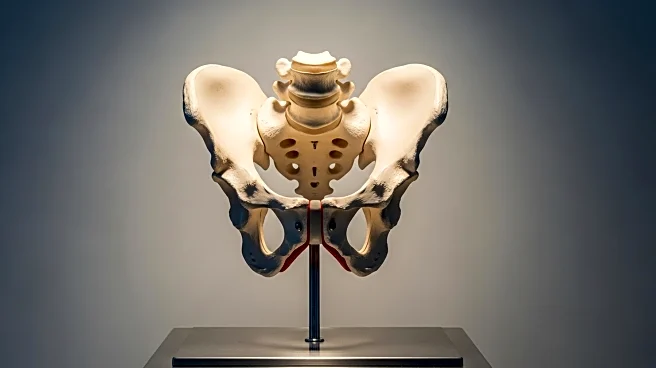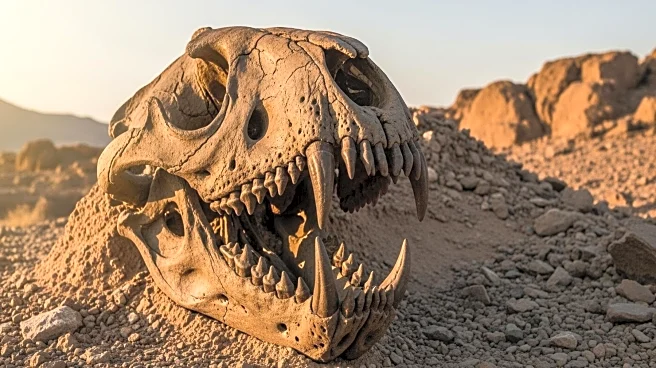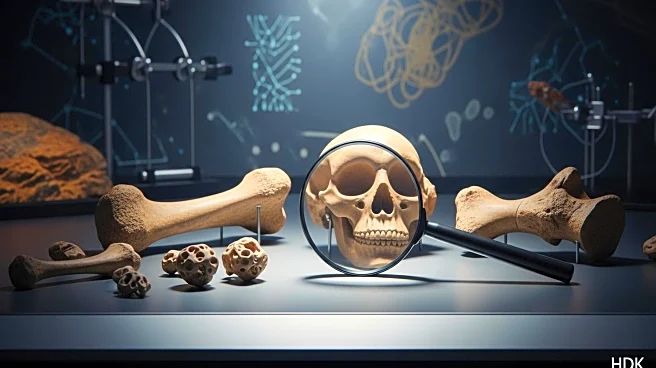What's Happening?
A remarkable fossilized larva, dating back 520 million years, has been discovered with its brain and guts still intact. This fossil is one of the earliest ancestors of arthropods, a group that includes insects, crabs, and lobsters. The discovery was made possible through synchrotron X-ray tomography, which allowed scientists to generate 3D images of the fossil's internal structures. The preserved details include a brain, digestive glands, a primitive circulatory system, and traces of nerves. This level of preservation has provided scientists with new insights into the complexity of early arthropods and their evolutionary connections to modern species.
Why It's Important?
The discovery of this fossil offers a unique window into the evolutionary history of arthropods, a group that has thrived in diverse environments across the globe. The preserved structures challenge previous assumptions about the simplicity of early arthropods and highlight the evolutionary advancements that have allowed them to adapt to various habitats. This research could lead to a better understanding of the evolutionary processes that have shaped the diversity of life on Earth, providing valuable information for evolutionary biology and paleontology.
What's Next?
Scientists may continue to study the fossil to uncover more details about the evolutionary history of arthropods. Further research could focus on comparing the fossil's structures with those of modern arthropods to identify evolutionary changes over time. Additionally, the discovery may inspire new techniques for studying ancient fossils and their preserved soft tissues.
Beyond the Headlines
The preservation of soft tissues in ancient fossils raises questions about the conditions that allow for such preservation and the potential for discovering more fossils with intact soft tissues. This could lead to advancements in paleontological methods and a deeper understanding of the fossilization process.
